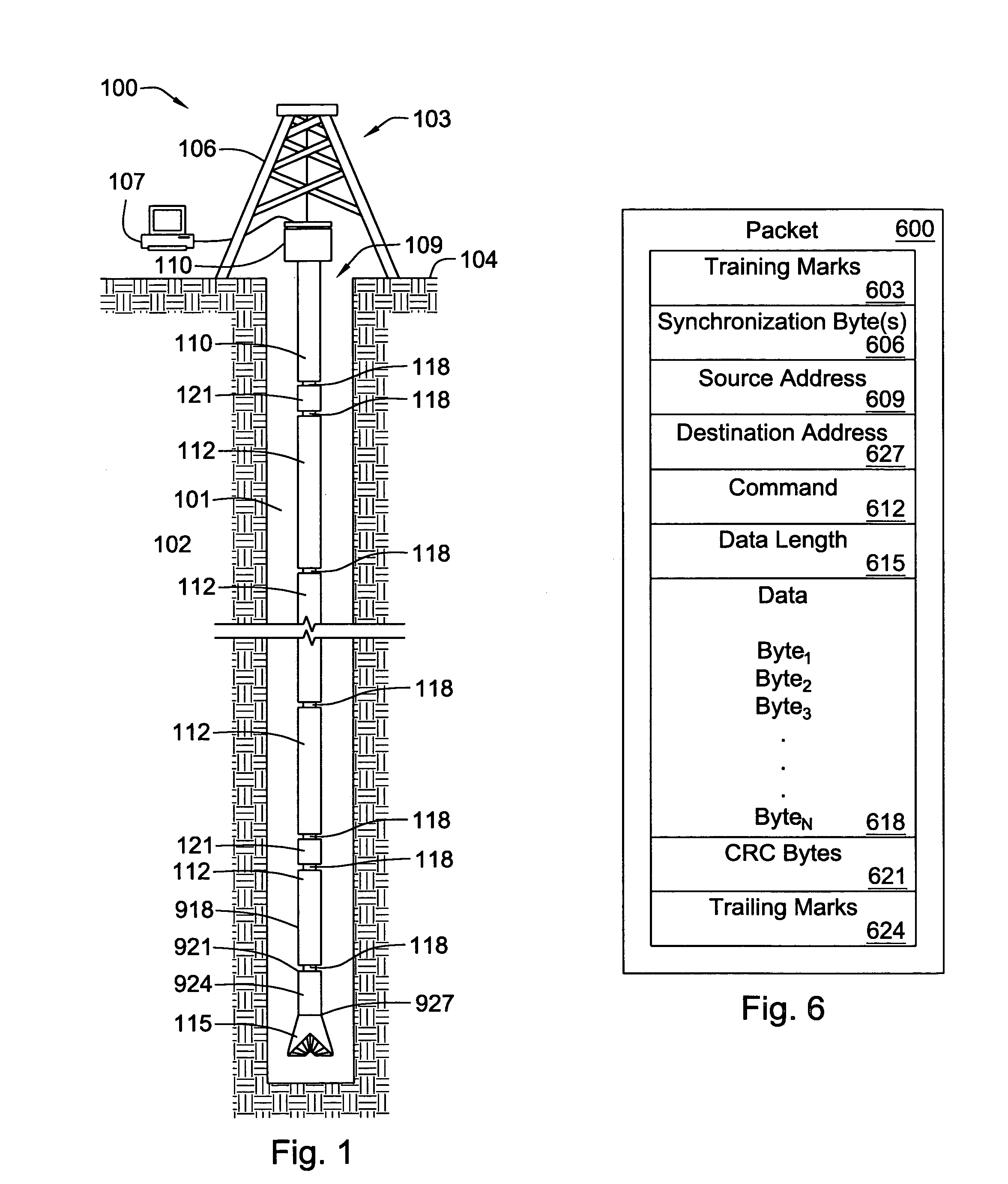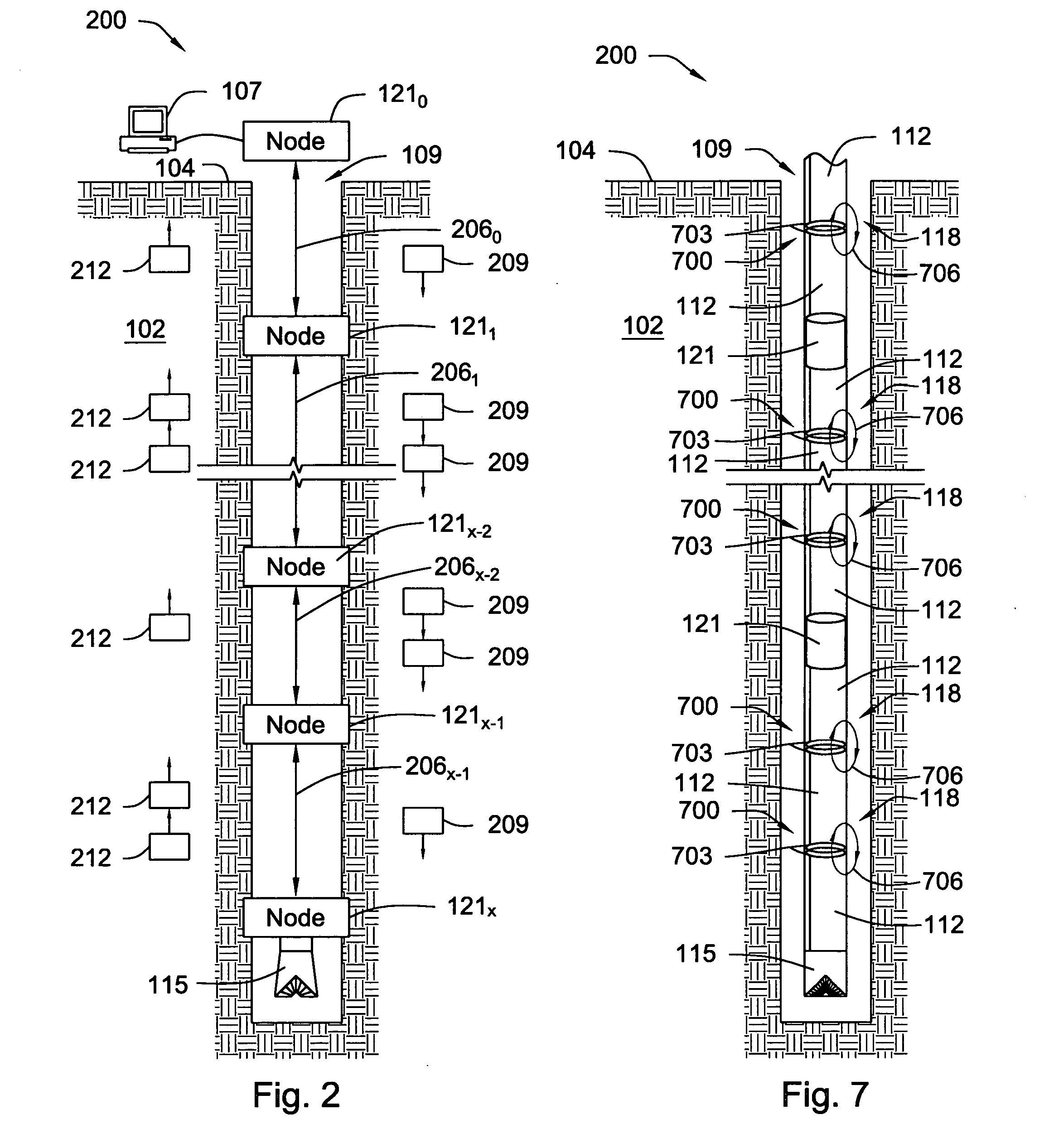The reasons are many, but the interest primarily arises from the fact that even minor interruptions in drilling operations can be quite expensive.
Many types of interruptions can be very expensive.
Gathering information about down-hole drilling conditions, however, can be a daunting challenge.
The down-hole environment is very harsh, especially in terms of temperature, shock, and vibration.
Furthermore, many drilling operations are conducted very deep within the earth, e.g., 20,000′-30,000′, and the length of the
drill string causes significant attenuation in the
signal carrying the data to the surface.
The difficulties of the down-hole environment also greatly hamper making and maintaining electrical connections down-hole, which impairs the ability to obtain large amounts of data down-hole and transmit it to the surface during drilling operations.
In general, data taken from the surface and only limited data taken from the surface and / or the bottom of the borehole is available.
Because the borehole might be as deep as 20,000′-30,000′, surface data frequently is not particularly helpful in these types of extrapolations.
The down-hole data can be more useful than surface data, but its utility is limited by its relatively small amount and the fact that it represents conditions localized at the bottom of the bore.
Thus, the down-hole data may be useful in detecting some conditions at the bottom of the borehole but of little use for other conditions at the bottom or along the length of the
drill string.
Although conventional overbalanced drilling has been recognized as the safest method of drilling, it has several drawbacks.
Since the
drilling fluid pressure is maintained higher than the formation's pore pressure, the formation is easily damaged by the intrusion of drilling fluids into the formation.
For example, overbalanced drilling may cause the blockage or
washout of the formation structure.
In addition, because the
drilling fluid pressure exceeds the formation's pore pressure, the penetration speed of the
drill bit may actually decrease.
This occurs because cuttings produced by the
drill bit are often inadequately removed in overbalanced systems, thereby causing the
drill bit to rotate against the buildup of cuttings rather than penetrating through virgin rock.
This also decreases the life of the drill bit, thereby requiring more frequent drill bit replacement and loss of drilling time.
First,
underbalanced drilling is more subject to blowouts, fires, and explosions caused by the formation pore pressure overwhelming the lower pressure of the drilling fluid.
Second, due to the precise control and monitoring needed, underbalanced drilling can be more expensive than conventional drilling.
Also, because of the
decreased pressure, the removal of cuttings can be problematic, especially in
directional drilling applications where the well deviates from vertical or is substantially horizontal.
For instance, one adverse drilling condition of interest is “stuck
pipe.” As the drill sting bores through the earth, the borehole seldom descends straight into the earth.
There typically are many deviations from the vertical, and some may be very severe in some drilling applications.
In these situations, the sides of the borehole may bind the
drill string causing it to become stuck within the borehole.
Once the drill string becomes stuck, it is quite costly to halt drilling operations and free the drill string.
Current techniques cannot provide this kind of information because the data they work from has insufficient
granularity.
 Login to view more
Login to view more  Login to view more
Login to view more 


